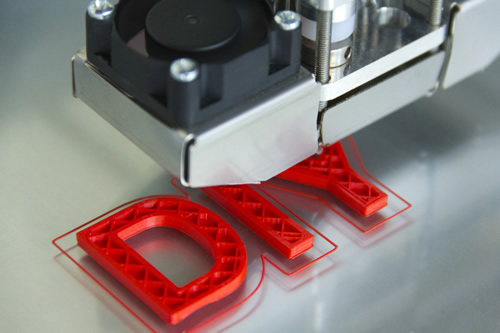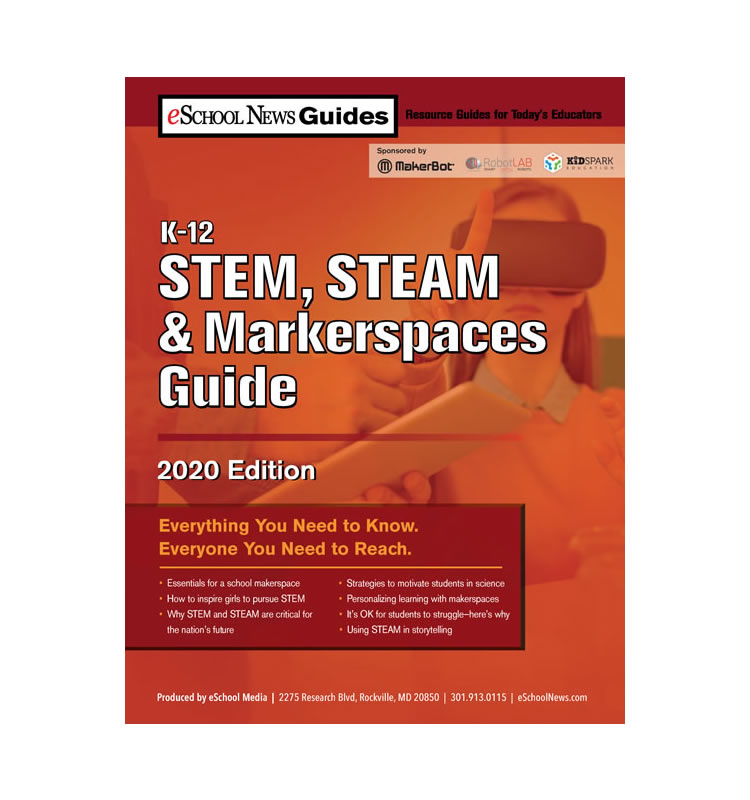You wouldn’t just randomly choose a tool from your toolbox and feel confident it was the right one to cut a board or attach a hinge. Same goes for a school makerspace.
Like everything in ed tech, it’s not enough to have a bunch of shiny gadgets in your makerspace. You need to have the right materials to meet your goals.
Vinnie Vrotny, director of technology at The Kinkaid School in Houston, Texas, understands how tempting it is to fill a space with the latest devices. But before you do, here are eight questions you should ask to determine if you’re choosing wisely.
Related content: How to transform your library into a makerspace
Important questions for your makerspace creation
1. What is the experience you’re trying to create?
In other words, what is the purpose of the makerspace? If you’re unclear about what you want students to be able to do when they leave the space, you’re starting off on the wrong foot. Maker magic lies in the disposition rather than a specific task or skill. Do you want students to be creative and take risks? The options are many, but they need to be part of the planning.
Related Content:
eSchool News STEM, STEAM, & Makerspaces Guide
The eSchool News STEM, STEAM, & Makerspaces Guide is here! It features strategies to help you integrate STEM, STEAM, and makerspace education into classrooms, and it offers a look at how these tools engage students and give them valuable skills. A new eSchool News Guide will launch each month–don’t miss a single one!
2. What are the learning goals and outcomes you want to achieve in this space?
The learning goals must be tied to the makerspace experience, and you want students to apply knowledge and demonstrate understanding of a concept, whether the subject is science, literature, history or something else.
For example, Vrotny’s school designed transformed the traditional diorama assignment into an interactive museum display with engaging hooks. Students dreamed up everything from a formative quiz that lights up an area when you push a button to historical signs that show topographically where an event occurred.
3. Who will lead the student experience?
Someone needs to lead the student experience. Vrotny suggests a STEM teacher, makerspace teacher, classroom teacher or librarian. Regardless of the title, the space needs a leader.
4. Will you provide students a set curriculum or more open-ended projects?
Will you take a genius hour approach where students are free to pursue passion projects or will you introduce a particular curriculum?
The Kinkaid School does both. In a curriculum-based maker project, for example, their first graders did a reading study on leprechauns. In the makerspace, they prototyped leprechaun traps and set them before spring break, then returned excited to see if they had caught one of the magical beings. Middle schoolers, on the other hand, created models of the two atomic bombs and the Enola Gay to reinforce a social studies unit. In other sessions, the students pursued their passion projects.
5. What grade levels will your space target?
The tools you purchase for an elementary makerspace are different than a space for older students. For elementary, low-cost, low-tech solutions are often sufficient. Add more complexity with laser cutters and 3D printers at the middle school levels. A high school makerspace might evolve to band saws and jigsaws, machines not suited for an elementary room.
6. How will students access the space?
Will your makerspace be part of a regularly scheduled class, will students attend to work on a particular project or is this an impromptu drop-in space they use during free time? Decide these questions first to make good use of the space.
7. How will educators learn how to get the most from the makerspace?
How will you provide professional development? Will it be a one-time session to show teachers the space? Or do you plan to hold regular meetings with grade-level faculty to discuss curriculum and brainstorm ideas for maker activities? There is no right or wrong answer; you just need to have an answer.
8. How will you assess the students on their projects?
Assessment ties back to learning goals and outcomes. If your focus is on students feeling comfortable with risk and even failure, you might choose not to grade entirely on the quality of the artifact they built. If you want to teach creativity, grit or persistence, reward it instead of penalizing failure. Students need a lot of encouragement to take risks.
Once you answer these eight question, creating a makerspace becomes purposeful, affordable and fun.
- 5 obstacles AI can help schools overcome - April 16, 2024
- Guidance counselors could help female high schoolers erase the STEM gender gap - April 16, 2024
- How video coaching inspires teacher self-reflection - April 15, 2024


